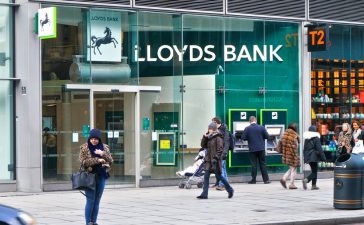The Vermont State Housing Authority, which manages federal rental assistance programs, will administer a $25 million rental assistance program
The state of Vermont (US) is launching a pair of programs Monday aimed at keeping Vermonters in their homes despite the faltering economy.
The nonprofit Vermont Housing Finance Agency will administer a $5 million mortgage relief program that will provide up to three monthly mortgage payments to the mortgage servicer in order to prevent a foreclosure.
The Vermont State Housing Authority, which manages federal rental assistance programs, will administer a $25 million rental assistance program.
State officials estimate 10% of Vermont’s 45,000 mortgage-holders have taken a financial hit in the Covid-19 pandemic and accompanying economic slowdown. More than 44,000 people have filed for unemployment benefits, an eight-fold increase over the number at the beginning of March, before the emergency began.
To be eligible for mortgage assistance, homeowners must have obtained their mortgage before March 1, meet income limits, and have missed at least two mortgage payments since March. VHFA will accept applications from July 13 through August 31, said VHFA Executive Director Maura Collins.
Applicants in most of the state must have earned less than $15,000 in the last 90 days — or, less than $18,000 in Chittenden County. Collins said the program is not just for VHFA borrowers, but all homeowners who qualify.
Despite the governor’s proposal and the Legislature’s good work, we anticipate there will not be enough funding for the applications we expect, Collins said at Gov. Phil Scott’s regular press conference on July 10. She noted that the money won’t be granted on a first-come, first-served basis. We’ll be prioritizing those who have the lowest income and the highest risk of foreclosure.
The money for both programs comes from Vermont’s $1.25 billion share of the $2 trillion emergency CARES Act that Congress passed in March. The programs announced July 10 are part of an $85 million measure that Scott signed into law July 2 that also includes legal and counselling services, eviction protection, rental assistance and other housing support.
To qualify for the rental assistance, tenants must meet income eligibility requirements. The rent can’t be higher than the VSHA standards, said Richard Williams, the executive director of the VSHA. That is about $1,464 for a two-bedroom apartment in the Burlington and South Burlington area, and $1,199 for a two-bedroom in Central Vermont.
Williams said the agency won’t verify tenant income as part of administering the aid.
We all know that most of our Vermonters are very honest, he said. I know people have been trying to pay the rent, and we have seen some good statistics that show people are paying the rent. But I think we’re going to see as this pandemic continues, people are being stressed out, and the monies that they were receiving will run out soon.
Landlords are eligible for assistance if the rental unit is occupied but the rent is delinquent. The amount of money owed to the landlord must be confirmed by the tenant. The money can also be used to cover overdue rental payments or for tenants’ security deposits.
The goal of this program during this health emergency is to keep Vermonters housed, to avoid homelessness, to avert eviction, said Williams. The second goal is to compensate landlords for some of their losses.
Another of Williams’ goals is to address a backlog of about 600 landlord-tenant cases that have been sitting in court since early April. Many aren’t related to Covid-19, but Williams said the priority is to get the cases resolved through work with Vermont Legal Aid and the Vermont Landlord Association.
We can clear those and make it easier on the landlords, he said. It doesn’t have to be exactly Covid-related. The idea is we don’t want an eviction between the first of March and the end of December.
Josh Hanford, commissioner of the Department of Housing and Community Development, said the two programs are part of a larger strategy to help house Vermonters. Well before the Covid-19 crisis, addressing the shortage of affordable housing was a major priority for policymakers.
Many Vermont families and landlords are struggling, said Hanford. This won’t address all their needs. Recovery starts with everyone having a safe and secure place to call home.
There are about 85,000 low-income households renting in Vermont, said Williams. He expects about 10% to qualify for rental assistance. Collins said there are 45,000 homeowners in Vermont with mortgages whose incomes make them eligible for mortgage assistance. Several mortgage lenders have reported 7% to 10% borrowers have used mortgage forbearance programs to put off payments because of the Covid-19 crisis, she said.
We’ll know more as of Monday when applications are open, Collins said.






